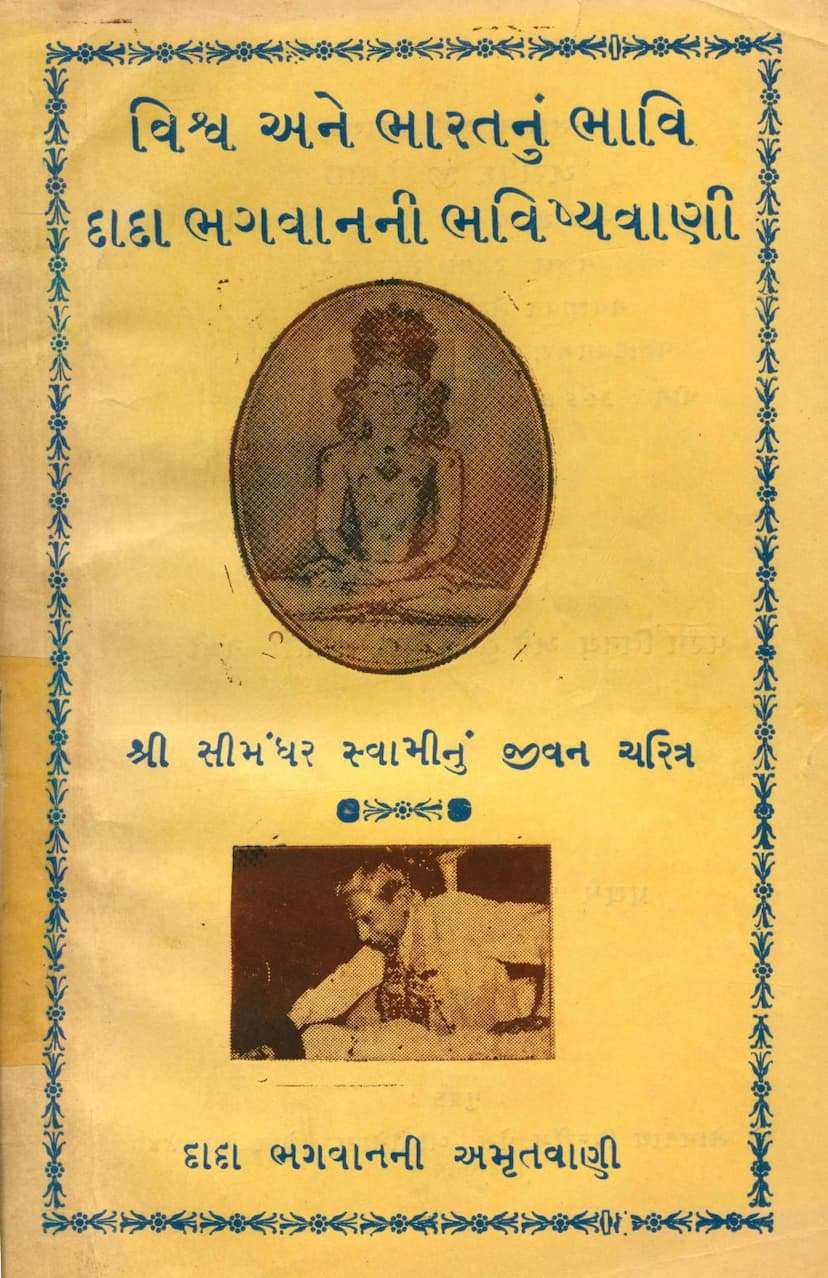Simandhar Swami Jivan Charitra
Added to library: September 2, 2025

Summary
This Jain text, "Simandhar Swami Jivan Charitra" by Dada Bhagwan, published by Akram Vigyan Foundation, is a compilation of teachings and prayers focused on Lord Simandhar Swami, a living Tirthankar (ford-maker) residing in the Mahavideh kshetra (land). The core message emphasizes the importance of devotion to Lord Simandhar Swami as a means to attain liberation (moksha) in this current era (Pancham Kal).
Here's a breakdown of the key themes and concepts presented in the text:
Central Figure: Lord Simandhar Swami
- Living Tirthankar: The text repeatedly highlights that Lord Simandhar Swami is currently living and actively guiding souls towards moksha from the Mahavideh kshetra. This distinguishes him from the Tirthankaras of Bharat kshetra who have attained liberation.
- Direct Path to Moksha: Devotion and remembrance of Lord Simandhar Swami are presented as the most effective and direct path to moksha in this era, especially for souls residing in Bharat kshetra.
- Connection with Bharat Kshetra: Lord Simandhar Swami has a special connection with Bharat kshetra, making his devotion particularly beneficial for individuals from this region.
- His Presence: The text asserts that Lord Simandhar Swami is not just a historical figure but a present, living entity whose form can be perceived through devotion and divine grace.
Key Practices and Teachings:
- Devotion and Remembrance: The text encourages constant remembrance of Lord Simandhar Swami, meditating on his form, and offering prayers. Specific practices include chanting his name and performing Aarti.
- The "Trimantra": A significant portion of the text explains the importance and power of the "Trimantra," which combines the Jain Navkar mantra, the Vasudev mantra ("Namo Bhagavate Vasudevaya"), and the Shiva mantra ("Om Namah Shivaya"). This is presented as a universal mantra that unites different spiritual traditions and helps overcome obstacles.
- Namskar Vidhi: A specific ritual of performing 40 daily prostrations (namaskars) to Lord Simandhar Swami is recommended, which is believed to yield the fruit of 108 direct namaskars. The importance of sincerity and devotion in this practice is stressed.
- Role of the Gnani Purush (Dada Bhagwan): Dada Bhagwan is presented as the "Pratyaksh Gnani Purush" (living enlightened being) who facilitates the connection with Lord Simandhar Swami. He acts as a medium, guiding devotees and ensuring their prayers and offerings reach the Tirthankar. His teachings are considered the "Akram Vignanam" (effortless science).
- Understanding the Nature of Tirthankaras: The text clarifies that Tirthankaras who have attained moksha (become Siddha) are no longer "Arihants" in the active sense of guiding souls. Only a living Tirthankar like Lord Simandhar Swami can be considered a current Arihant for the purpose of direct spiritual guidance.
- Mahavideh Kshetra: An explanation of Mahavideh kshetra is provided, describing it as a celestial land with 20 Tirthankaras continuously working for the salvation of souls. It is characterized as being in a perpetual fourth era, ensuring a constant presence of Tirthankaras.
- Overcoming Obstacles and Karma: The practices recommended are believed to help purify karma, overcome worldly obstacles, and facilitate spiritual progress.
- Importance of the Present: While acknowledging the significance of past Tirthankaras, the emphasis is strongly placed on the present, living Tirthankar, Lord Simandhar Swami.
- Building Temples: The text also touches upon the construction of temples for Lord Simandhar Swami, Lord Krishna, and Lord Shiva, symbolizing unity and the overcoming of sectarian divisions. This is seen as a way to foster a harmonious environment and bring about world welfare.
Underlying Philosophy: The teachings are rooted in the Akram Vigyan path, emphasizing self-realization and liberation through devotion to a living Gnani Purush who can directly connect one to the Tirthankara. The emphasis is on understanding the 'Self' (Shuddhatma) and eradicating the ego, anger, pride, deceit, and greed. The text suggests that through sincere devotion and adherence to the Gnani's guidance, one can achieve moksha in this very lifetime or within a few lifetimes.
In essence, "Simandhar Swami Jivan Charitra" serves as a guide for spiritual seekers in the current era, presenting Lord Simandhar Swami as the ultimate spiritual guide and Dada Bhagwan as the instrumental force facilitating this connection for the ultimate goal of moksha.